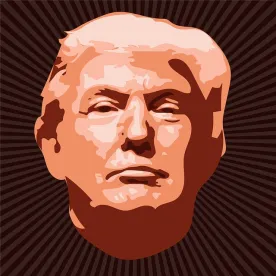President Trump’s order sets forth core regulatory principles and requires an extensive report in 120 days, which could lead to broader changes in the regulation of the US financial markets.
US President Donald Trump issued an executive order (Order) on February 3 to begin a process to evaluate whether changes should be made to the regulations governing the US financial system.[1] The Order, which is fairly broad and general, is likely a first step in a longer, more detailed process of making changes to the regulatory structure of the US financial markets.
The Order states that it will be the policy of President Trump’s administration to regulate the US financial system in a manner consistent with certain “Core Principles” and directs the Secretary of the Treasury to consult with the heads of certain agencies and report to President Trump on how existing financial regulatory frameworks promote or inhibit these Core Principles.
Core Principles
The Order lists seven Core Principles that compose the policy of the administration in regulating the US financial system:
-
Empower Americans to make independent financial decisions and informed choices in the marketplace, save for retirement, and build individual wealth
-
Prevent taxpayer-funded bailouts
-
Foster economic growth and vibrant financial markets through more rigorous regulatory impact analysis that addresses systemic risk and market failures, such as moral hazard and information asymmetry
-
Enable American companies to be competitive with foreign firms in domestic and foreign markets
-
Advance American interests in international financial regulatory negotiations and meetings
-
Make regulation efficient, effective, and appropriately tailored
-
Restore public accountability within federal financial regulatory agencies and rationalize the federal financial regulatory framework
Treasury Report
As noted above, the Order directs the Secretary of the Treasury[2] to consult with the heads of the member agencies that compose the Financial Stability Oversight Council (FSOC)[3] and report to President Trump by early June 2017 on
-
the extent to which “existing laws, treaties, regulations, guidance, reporting and recordkeeping requirements, and other government policies” (Regulations) promote the Core Principles;
-
what actions have been taken to promote and support the Core Principles; and
-
Regulations that inhibit federal regulation of the US financial system in a manner consistent with the Core Principles.[4]
The Order lays out an ambitious 120-day schedule for the Treasury report—each agency to be consulted oversees a complex and expansive body of Regulations that would be relevant subject matter. Because President Trump’s nominee for Secretary of the Treasury is still going through the confirmation process, it is unclear whether the Acting Secretary of the Treasury will begin this process, for which a 120-day clock commenced with the issuance of the Order on February 3.
Potential Impact
Although not mentioned by name, the Order would require a critical review of the Dodd-Frank Wall Street Reform and Consumer Protection Act (Dodd-Frank Act), which, among other things, created the FSOC. President Trump indicated in public remarks surrounding the release of the Order that his administration is concerned that excessive regulations are keeping financial institutions from being able to conduct their core businesses, including lending money into the marketplace.
One issue stemming from the Order is the extent to which the executive branch, without congressional action, can make changes to the regulatory framework created by the Dodd-Frank Act and other financial regulatory requirements. For example, the Volcker Rule, which was enacted as part of the Dodd-Frank Act and subsequently implemented through a set of cross-agency regulations, and which imposes limitations on the proprietary trading and private fund sponsorship of banking organizations, presumably could only be revised or repealed by an act of Congress. Similarly, the Dodd-Frank Act required hundreds of studies and rules, many of which have been finalized and implemented by the industry, often at great expense. Congress has previously signaled that it will undertake a review of the Dodd-Frank Act, most likely through the vehicle of the Financial Choice Act of 2016 (CHOICE Act), which could be reintroduced this session. The extent to which the administration and Congress will work together on the Dodd-Frank Act reform process remains to be seen, although we would expect to see a significant level of consultation and cooperation between the administration and the Republican leadership of Congress in this process.
The Order also could prompt a review of other federal government regulatory actions affecting the US financial sector that extend beyond the Dodd-Frank Act. For now, the financial industry will wait to see what the Treasury report outlines this June. Conceivably, the Treasury secretary could look to existing templates for streamlining US financial market regulations, such as the CHOICE Act introduced in the House by Representative Jeb Hensarling in September 2016 or the Financial Regulatory Improvement Act of 2015 introduced in the Senate by Senator Richard Shelby in June 2015.
Executive Order on Fiduciary Rule
On the same day the Order was released, President Trump also issued an executive order with respect to the US Department of Labor’s Fiduciary Rule.
[1] See Presidential Executive Order on Core Principles for Regulating the United States Financial System (Feb. 3, 2017).
[2] Adam Szubin is the Acting Secretary of the Treasury. President Trump has nominated Steve Mnuchin for Secretary of the Treasury.
[3] There are nine member agencies of the Financial Stability Oversight Council: (1) Board of Governors of the Federal Reserve System, (2) Commodity Futures Trading Commission, (3) Federal Deposit Insurance Corporation, (4) Federal Housing Finance Agency, (5) National Credit Union Administration, (6) Office of the Comptroller of the Currency, (7) Securities and Exchange Commission, (8) Department of the Treasury, and (9) Consumer Financial Protection Bureau. Although the Order does not specify, presumably the Treasury secretary would review the Treasury Department’s laws himself.
[4] The Order also points out that it does not impair or affect the authority granted by law to an executive department or agency, or the head thereof.




 />i
/>i
